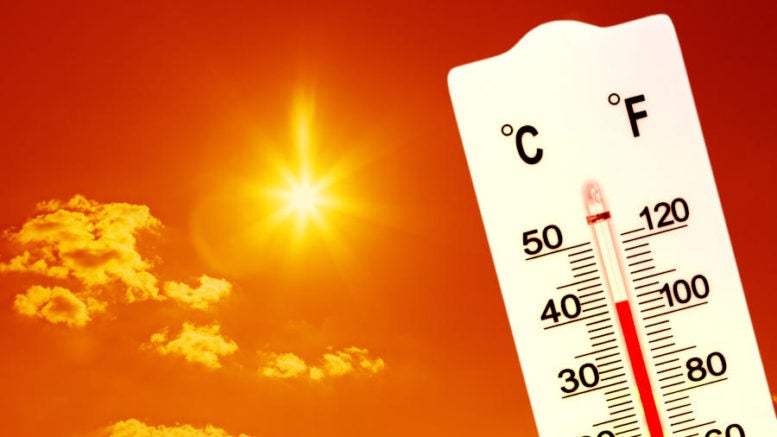Information about Heat
Overview
What to Expect

Summers in the Treasure Valley are quite hot. Daily high temperatures average in the lower 90s during July and August, the hottest months of the year. However, higher temperatures are common, and temperatures in the valley exceed 100 degrees almost every year. In fact, in the 80-year record, there were only four years when Boise temperatures did not reach or exceed 100. The last one was 1982 (NOAA: Applied Climate Information System).
Worst-Case Scenario
Heat waves, long stretches of above normal temperatures, happen every few years in the Treasure Valley. The worst of these heat waves can bring multiple days in a row of triple digit temperatures, along with warm nights that bring little relief for those without air conditioning. The longest stretch of consecutive 100 degree days documented at the Boise Air terminal is 9 days, but stretches of temperatures in the 90s commonly last even longer (the longest in record being 44 days) (NOAA: Applied Climate Information System). These heat waves are especially hard on the elderly and those with chronic health conditions (CDC: Extreme Heat), who are at higher risk for heat-related illnesses such as heat stroke, heat exhaustion, and heat cramps. Heat is the leading cause of weather-related deaths in the U.S. each year (NWS: Weather Fatality Statistics).
How to Prepare
People who spend a lot of time outdoors and those without air conditioning are at a heightened risk for the health effects of the extreme heat that is common to the Treasure Valley, but there are things we can do to mitigate these dangerous effects of the heat.
- Know the symptoms of heat-related illness and what to do if you or someone nearby experiences them.
- Pay attention to the weather forecast, and plan your time outdoors accordingly.
- Stay hydrated by drinking one cup, or 8 ounces, of water every 15-20 minutes.
- Stay in an air conditioned place as much as possible, even if that means you must spend a few hours at a shopping mall or library. A few hours in the air conditioning can help your body stay cool even once you’ve reentered the heat.
- Do not leave children or pets in vehicles for any reason whatsoever. In fact, the temperature in your car can warm to 109 degrees after as little as 20 minutes when the outside temperature is only 80.

- Wear sunscreen with an SPF of 15 or greater to prevent sunburns, as they can inhibit the body’s ability to cool itself (CDC).
- Avoid large, calorie-dense meals as these can add heat to the body.

Heat related deaths are preventable. Protect yourself and others from the impacts of heat waves. Job Sites: stay hydrated and take breaks in the shade as often as possible. Indoors: Check up on the elderly, sick, and those without AC. Vehicles: Never leave kids or pets unattended – Look before you Lock. Outdoors: Limit strenuous outdoor activities, find shade, and stay hydrated. Weather.gov/heat
Local Resources
- General: American Red Cross on Heat Wave Safety and CDC on Extreme Heat
- For outdoor workers: CDC Information and OSHA Information
- Pertinent weather information: Local NWS Office and NWS: Heat Risk Map
How is this hazard impacted by a changing climate?
As the climate warms, hotter and longer heat waves can be expected across the Treasure Valley. In addition, the changing climate is expected to include drier conditions across the region, which would increase the risk for dehydration.
Written by John Bumgardner, 2020 NOAA-NWS Intern